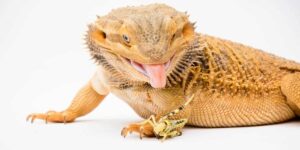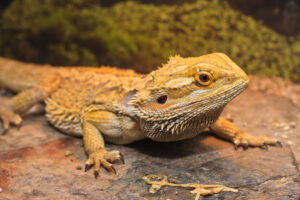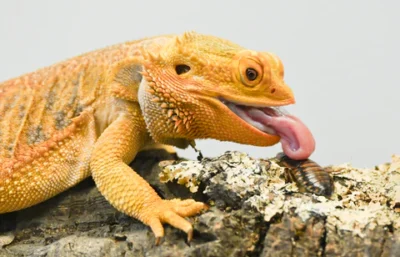Bearded dragons are fascinating reptiles known for their unique behaviors and captivating appearances. However, as reptile enthusiasts know, these beloved creatures can sometimes experience health issues that require attention and understanding.
One such concern that often captures the attention of owners is “bearded dragon eye bulging.” This phenomenon, while alarming at first glance, can stem from various causes, ranging from benign to potentially serious.
In this article, we’ll delve into the intricacies of bearded dragon eye bulging, shedding light on its possible triggers, symptoms, and essential care strategies to ensure the well-being of these remarkable pets.
30 Causes of Eye Bulging in Bearded Dragons

Eye bulging in bearded dragons can be a concerning symptom and may indicate various underlying health issues.
Symptoms of Eye Bulging
Eye bulging in bearded dragons may present with several noticeable symptoms in addition to the visible protrusion of the eye itself. These symptoms can vary depending on the underlying cause but may include:
- Visible Protrusion: The most obvious symptom is the bulging or protrusion of one or both eyes from their sockets.
- Redness and Swelling: The affected eye may appear red, swollen, and inflamed.
- Discharge: There may be discharge from the affected eye, which can be clear, cloudy, or even pus-like in appearance.
- Difficulty Closing the Eye: The bearded dragon may have difficulty fully closing the affected eye, or it may remain partially open.
- Rubbing or Scratching at the Eye: The bearded dragon may frequently rub or scratch at the affected eye, indicating discomfort or irritation.
- Changes in Behavior: Eye bulging can cause discomfort or pain, leading to changes in behavior such as decreased activity, loss of appetite, or lethargy.
- Sensitivity to Light: The affected eye may be more sensitive to light, causing the bearded dragon to shy away from bright lights or sunlight.
- Cloudiness or Opacity: The affected eye may appear cloudy or opaque, indicating possible damage to the cornea or other internal structures.
- Head Tilting: In some cases, the bearded dragon may tilt its head to one side, especially if the bulging is accompanied by inner ear issues or vestibular problems.
If you notice any of these symptoms in your bearded dragon, it’s crucial to seek veterinary care promptly. Eye issues can worsen rapidly and may lead to permanent damage if left untreated. A reptile veterinarian can perform a thorough examination and recommend appropriate treatment based on the underlying cause of the eye bulging.
Diagnosis of bearded dragon eye bulging


